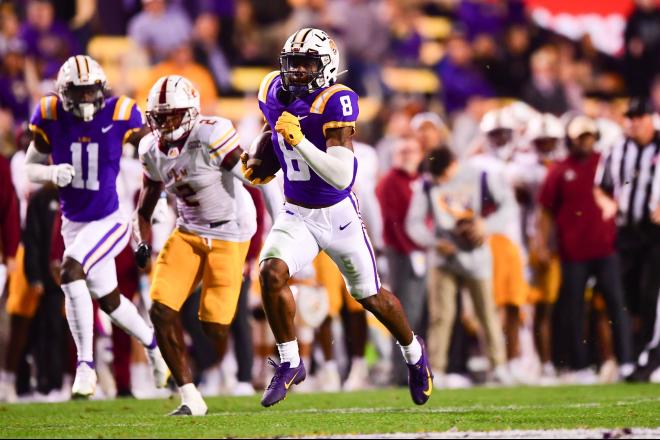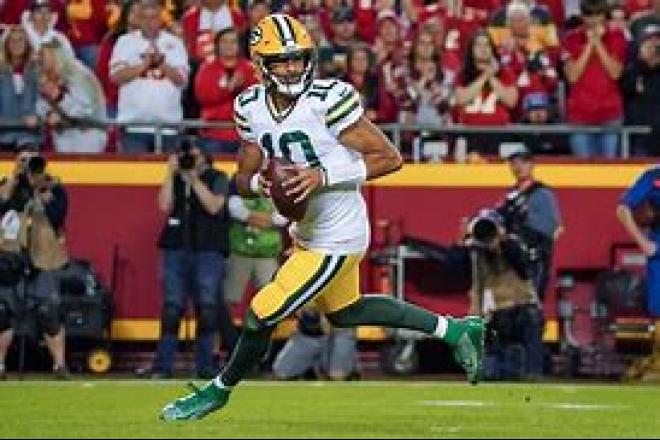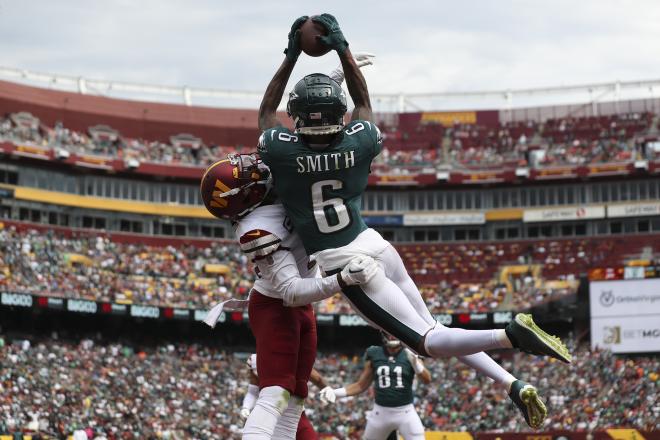Welcome back to another enlightening chapter of Dynasty Diaries, where we embark on a journey exploring the often overlooked yet undeniably crucial aspect of dynasty fantasy football—cultivating a winning culture. In this edition, we'll delve into the importance of team culture, camaraderie, and the intangibles that contribute to long-term success. Drawing inspiration from the trades and injury management strategies we've explored in previous articles, join me in unraveling the fabric of a dynasty team's identity and the impact it has on sustained excellence.
To begin, here is a recap of my dynasty roster from my 2022-2023 Sleeper dynasty league:
Current Roster And Draft Picks:
QB’s: Brock Purdy, Jordan Love, Kyler Murray, Desmond Ridder, Zach Wilson
RB’s: Antonio Gibson, Kenneth Gainwell, Joshua Kelley, Michael Carter, Sean Tucker
WR’s: CeeDee Lamb, Amon-Ra St. Brown, Rashee Rice, Josh Downs, Tee Higgins, Jerry Jeudy, Wan’Dale Robinson, Treylon Burks, Jalin Hyatt, Mike Williams, Christian Kirk, Skyy Moore
TE’s: Darren Waller, Daniel Bellinger, Hunter Henry
K - Jason Sanders
DEF - New York Jets
Taxi Squad: Jonathan Mingo, Cedric Tillman, Michael Mayer, Marvin Mims
Draft Picks:
2024: 2 - 1sts, 3 - 2nds, 6- 3rds, 4 - 4ths, 6 - 5ths
2025: 2-1sts, 3 -2nds, 4 - 3rds, 6 - 4ths, 6 - 5ths
2026: 1 -1st, 4 - 2nds, 3 -3rds, 4 - 4ths, 3 -5ths
The Foundation of Success: A Winning Culture
As the architect of my dynasty team, I've come to understand that a winning culture is more than just assembling a roster of talented players. It's about fostering an environment where each player understands their role, embraces the team's philosophy, and is driven by a shared commitment to success. The foundation of my dynasty journey lies not only in the stats and having points on the board but in the culture I'm building – a culture that thrives on unity, resilience, and the relentless pursuit of victory.
Reflecting on my earlier trades, the acquisition of Kyler Murray not only brought an elite quarterback to my roster but also catalyzed the improvement of my team’s QB depth. Murray's leadership on and off the field and his dynamic playmaking abilities set the tone for a culture centered around excellence. In dynasty football, a winning culture often starts with a leader who inspires confidence, and in Murray, I found that cornerstone. My logic behind acquiring Murray was to improve my depth and youth at the position, as my main dynasty strategy involves acquiring and having as much depth at as many positions as possible. With this being a Superflex league, having another good starting QB to pair with Love and Purdy places me in a good position moving forward.
Additionally, in the trade that brought Antonio Gibson into the fold, his journey became emblematic of the resilience I sought to instill in my team's culture. Drawing once again from my depth strategy, (as well as following the NFL's strategy of devaluing running backs), I was able to acquire Gibson relatively cheaply. At the beginning of the 2023 season, Gibson was projected to be the backup, but by the end of the year, was beginning to get a bigger share of the pie when it came to touches. Heading into 2024, Gibson will be a free agent, and while I generally shy away from running backs who are no longer on their rookie contracts, Gibson is still young enough to be a solid piece of my running back puzzle. Additionally, the “winning culture” he provides is a solid floor, as generally speaking he’s going to be a consistent RB2/3 with upside, which has value. An additional part of my “winning culture” involves chasing players with upside, and Gibson has that.
Yet another example of building depth included the trade involving DeVonta Smith. The addition of Tee Higgins and Jalin Hyatt not only bolstered the team's talent pool but also contributed to the formation of a brotherhood within the receiving unit. As previously mentioned in my previous article involving trades, one of the things I love to do most is trade down from a top-tier player at a specific position to receive multiple pieces in return. This is yet again another example of attempting to build a “winning” view of my dynasty team by acquiring younger pieces with more upside than I had with DeVonta.
Moving on, the trade that saw Russell Wilson depart in exchange for Christian Kirk and Mike Williams reflected a strategic shift in team-building philosophy. While acknowledging the departure of a key player, the addition of Kirk and Williams injected diversity into the receiving corps, fostering unity in purpose. In dynasty football, where adaptability is key, the ability of players to embrace varied skill sets contributes to a dynamic team culture.
Another reason why I wanted both Kirk and Williams is I love to buy players coming off injury or ineffectiveness, and both Kirk and Williams represent potential buy-lows heading into next season. Kirk and Williams have a history of solid fantasy production, and since I like taking the “long-view” approach to roster construction this type of move makes perfect sense. Additionally, the diversity within the receiving unit showcased the team's ability to evolve without compromising its identity. In a winning culture, players understand that success is not about individual accolades but about contributing to a collective triumph. The unity in purpose, despite the diversity in skill sets, epitomized the ethos of my team culture of balancing both short and long-term production.
Strategic Acquisition of Injured Players: Calculated Risks for Long-Term Gains
In the ever-evolving landscape of dynasty football, the strategic acquisition of injured players is a calculated risk that can contribute to the team's culture. When assessing potential returns on investment, the decision to acquire an injured player off the waiver wire or via trade becomes more than a roster move—it becomes a necessity. The willingness to invest in injured players reflects a long-term vision. It communicates that success is not solely about the present moment but also about building for the future. The calculated risks taken with injured players contribute to the pursuit of sustained success.
Knowing When to Sell or Get Rid of Injured Players: Balancing Loyalty and Pragmatism
While acquiring injured players can be a strategic move, knowing when to sell or get rid of them is equally crucial. If an injured player's recovery seems prolonged or their performance upon return is uncertain, it might be the right time to part ways, assuming,of course, you can find a buyer.
In my case with this dynasty roster, I have yet to trade away an injured player, as all of the acquisitions and players I’ve traded away were healthy. The potential challenge with trading away injured players is being able to acquire adequate value in return. While one team’s trash may be another team’s treasure, trading away injured players successfully involves a nuanced approach, and many times it is simply reliant upon the other manager’s willingness to take on said player. The decision to sell or release an injured player is not merely about the roster spot they occupy; it's about maintaining a culture of competitiveness. It reinforces the team's commitment to adaptability and ensures that every roster spot is optimized for immediate impact or future potential.
While managing a dynasty fantasy football team is much different than managing a real-life team, some core principles remain the same when it comes to assembling a “winning” team. Obviously, the easiest strategy involves getting the best players at each position. However, that approach isn’t always practical or easy. Most of the time, depth plays a much more crucial role in having a winning season than most managers realize and in an ideal world, one’s depth would be just as good as one’s starters. This is what contributes the most to a “winning culture” in the game we all know and love.
In the realm of Dynasty Diaries, where each chapter unfolds with trades, injury management, and the cultivation of a winning culture, the anticipation of the "Season Reflection" adds an intriguing dimension to our journey. As we evaluate the successes, challenges, and lessons learned at the end of each fantasy season, a canvas of possibilities for the future emerges. Reflecting on the strategic moves, the bonds forged within the roster, and the culture cultivated, we not only celebrate the victories of the past but also set the stage for the next chapter of Dynasty Diaries.
The "Season Reflection" becomes more than a retrospective glance; it transforms into a roadmap guiding us forward, steering our dynasty aspirations towards continuous growth, adaptability, and the relentless pursuit of lasting success. As we eagerly await the insights that the reflection will unveil, may the challenges encountered be transformative, the lessons learned fuel our dynasty ambitions, and the upcoming season be filled with new opportunities and triumphs. Until next time!





